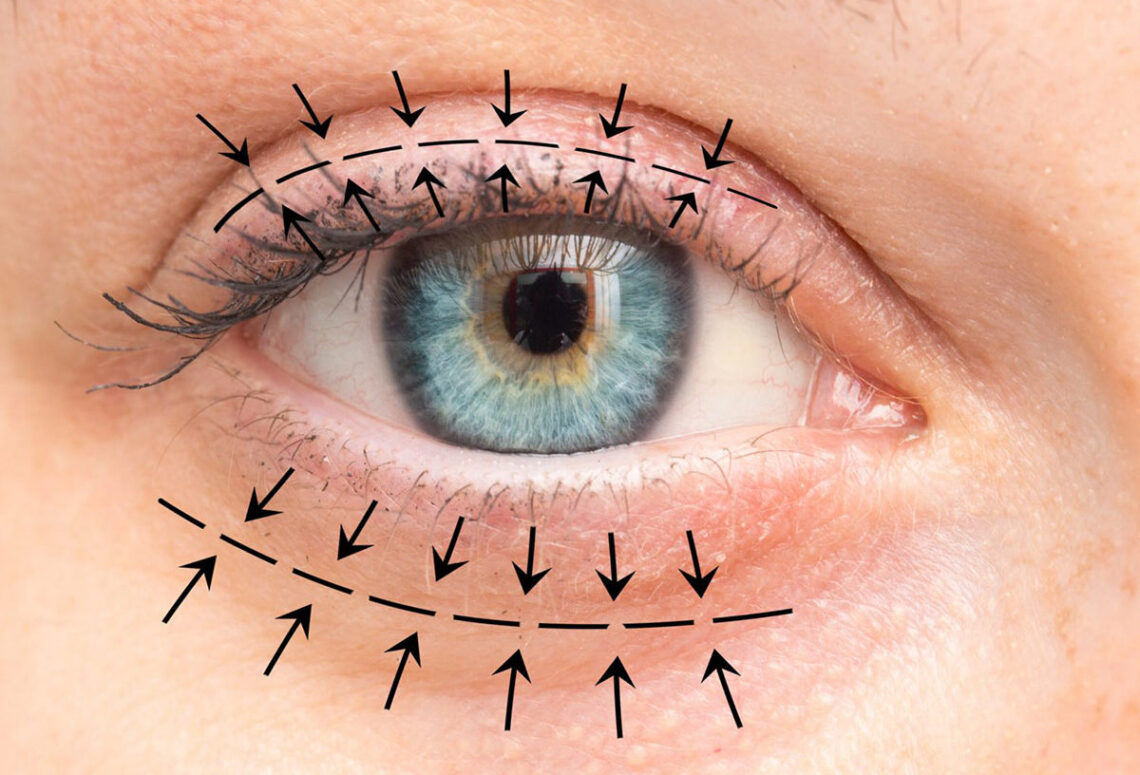Orbital surgery, also known as orbital decompression, is a surgical procedure used to treat a range of eye-related conditions. The procedure involves removing a bone from the eye socket, to allow the eye to move freely and relieve pressure on the optic nerve.
Whether a patient is doing it for medical or cosmetic reasons, it should only be performed by a skilled and experienced professional.
The Esthetic Clinics offer different options for different individual needs and goals. Patients can discuss their concerns with the cosmetic surgeon, understand their options, and get the appropriate treatment recommendation.
Indications for Orbital Surgery
There are a variety of conditions that may require orbital surgery. Patients should work with a reputable clinic like The Esthetic Clinics that has an experienced and skilled plastic surgeon and specialized practitioner like Dr. Debraj Shome who can help them identify indications for the orbital procedure and give the appropriate treatment recommendation.
Some of the most common indications for the procedure are:
- Graves’ disease
Grave’s disease, also known as hyperthyroidism, is an autoimmune disorder that affects the thyroid gland, leading to an overactive thyroid. Some symptoms of Grave’s disease are swelling and inflammation in the eye muscles, caused by the enlargement of the muscles around the eye. These can cause bulging eyes (proptosis) and double vision.
This can make it difficult for the patient to carry out their daily lives and obstruct some performances such as reading, driving, and even walking.
Orbital surgery can be an effective treatment for eye problems related to Graves’ disease. It can help reduce pressure from the optic nerves and restore and improve the functionality of the eye.
During the procedure, a surgeon removes a portion of the bone from the eye socket, creating more space for the eye to move freely and reducing the symptoms of Grave’s disease. It can help relieve pain, reduce double vision, and enhance the overall quality of life for patients with this condition.
While orbital surgery can help relieve all these symptoms, it is important that patients know this is not a cure for the Grave Disease itself. Patients still need to manage their thyroid hormone levels with medication and other treatments.
In some cases, extreme measures like additional surgeries may be needed if the eye symptoms return or worsen over time.
Patients with Grave’s Disease are urged to speak with a professional doctor if they are experiencing symptoms such as bulging eyes or double vision, to weigh their treatment options. The doctors can help determine whether orbital surgery is a viable option, and provide guidance on managing the condition overall.
- Tumors
During the procedure, the doctor works to remove the tumors around the eyes. Whether or not orbital surgery is the best option for removing tumors around the eyes depends on the size and location of the tumors.
Both benign and malignant tumors can develop in or around the eye socket. The surgery is typically performed by an ophthalmologist or a specialized orbital surgeon who has experience in treating tumors in the eye region.
The type of technique and surgery the surgeon will use depends on the size of the tumor, the location, the doctor’s preference, and the overall health and goals of the patient. Some procedures are less invasive while others are more complex.
In some cases, a minimally invasive approach such as a transconjunctival incision may be used, while in other cases, a more extensive procedure such as an orbital exenteration may be more appropriate.
Before the surgery, the patient undergoes a comprehensive eye exam and imaging tests such as a CT or MRI scan to determine the location and size of the tumor. The surgeon also reviews the patient’s medical history and any existing health conditions to ensure that they are a good candidate for the surgery.
During the procedure, the surgeon administers general anesthesia to ensure the patient’s comfort and safety. He will then make an incision in the skin or eyelid to access the tumor, and use specialized instruments to remove it from the surrounding tissue. While it is not necessary, he may need to remove a portion of the bone from the eye socket to gain better access to the tumor.
Once the procedure is done, patients remain in the hospital for a period of time for the doctors to monitor any potential complications such as bleeding or infection. They may also need to wear an eye patch or bandage for a period of time while the eye heals.
Just like any other procedure, there is a risk of complications that comes with the surgery. Patients may experience bleeding, infections, nerve damage, and changes in vision. The surgeon works closely with the patient to provide guidance and minimize these risks.
The initial consultation before the surgery is also important to help patients and surgeon determine if orbital surgery is the best option or if there are other more suitable treatments. A professional surgeon will also make their patients understand the benefits and risks associated with the surgery, and provide guidance on any additional treatments that may be necessary.
- Trauma
Eye traumas can be caused by an injury to the eye socket, a fracture, or an accident that affects the functionality of the eyes. In any of these cases, orbital surgery may be able to repair the damage and restore the normal functioning of the eye.
During the procedure, the surgeon works to repair and reconstruct the eye socket and surrounding structures.
Some causes of trauma to the eye region can be due to blunt force trauma from accidents or falls, penetrating injuries from sharp objects, or sports-related injuries. The specific technique used for the procedure will depend on the nature and severity of the injury. This includes minimally invasive or a more extensive approach.
In procedures that are less invasive, the practitioner may only need to make a small incision, through which he will work to restore the eye function. Extensive procedures may involve a whole reconstruction of the eye socket or the eye muscles.
The whole process is pretty straightforward. Once the patient determines they need an orbital surgery, the first step is to search for a clinic they can trust. The surgeon will schedule an appointment or appointments for consultations and eye examination and tests to determine the extent of the injury and the location of any fractures or damage to the eye socket.
During the actual surgery, the surgeon administers general anesthesia to ensure the patient is safe and comfortable. He will then make an incision in the skin or eyelid to access the injury and repair any fractures or damage to the eye socket and the surrounding tissues.
After the surgery, the patient remains in the hospital for a while to be monitored for any potential risks. Some complications associated with orbital surgery include bleeding, infection, nerve damage, and changes in vision.
- Proptosis
Proptosis causes one or both eyes to bulge forward from the socket. Some factors that cause this condition include thyroid eye disease, tumors, or trauma, which comes with a variety of symptoms such as dry eyes, difficulty in closing the eyelids, and vision changes. Orbital surgery can be done to help reduce these symptoms and improve eye function.
During orbital surgery for proptosis, the practitioner works to correct the bulging or protruding eyes, aiming to restore a more natural appearance to the eyes and improve their functionality.
There are two types of surgeries and techniques that can be used. Orbital compression and other minimally invasive procedures can be used in mild proptosis. In cases with severe symptoms, more extensive procedures such as orbital rim reconstruction or orbital implantation may be more suitable. The type of procedure used will depend on factors such as the underlying cause of the proptosis and the extent of the condition.
The surgeon performs thorough eye tests and examinations before the surgery to determine the type of procedure best suitable. He will then place the patient under general anesthesia to make the process easy for both of them.
During the procedure, an incision is made in the skin or eyelid to access the eye socket and make any necessary adjustments to the position of the eye. In cases with extensive proptosis, the surgeon may need to remove or reposition the eye muscles. He may then place an eye patch or bandage on the surgical site for a period of time as the eye heals.
Patients remain under the doctor’s observation so they can monitor how they are responding to the treatment and address any potential complications such as bleeding and infections.
Patients with proptosis are urged to speak with a qualified medical professional to determine the best treatment options for their individual cases. They can help them weigh the potential benefits and risks of the surgery, and provide guidance on any additional treatments that may be required.
- Congenital abnormalities
Besides accidents and traumas, other indications of orbital surgery are caused by birth. Some children are born with abnormalities of the eye socket and/ or the surrounding bones.
Orbital surgery for congenital abnormalities works to correct structural defects or malformations of the eye socket that are present at birth. These defects may have symptoms and complications such as vision problems, misalignment of the eyes, and difficulty with eye movement.
The surgeon will choose the specific technique for the surgery depending on the nature and extent of the congenital abnormality. Some cases may only need a less invasive procedure such as orbital decompression, while other cases may need a more extensive procedure such as orbital implantation.
A comprehensive eye examination is required before the surgery. Imaging tests like CT scans or MRI scan is also necessary to determine the extent of the abnormality and the location of any structural defects present.
During the procedure, the surgeon will administer general anesthesia to make the patient comfortable and still throughout the process. He will then start by making an incision in the skin or eyelid to access the eye socket and make any necessary adjustments to the structure or position of the eye.
If the abnormality is extensive or severe, the surgeon may need to perform a more extensive procedure such as the reconstruction of the eye muscles or other structures, to improve eye functionality and appearance.
After the surgery, the patient will remain under the doctor’s observation until they can determine that they are ready to be discharged. This is to monitor any signs of complications such as bleeding and infections. Follow-up appointments to monitor the recovery progress will also be scheduled.
Orbital Surgery Procedure
Orbital surgery is typically performed under general anesthesia, which means that the patient is asleep during the procedure. The surgeon then makes an incision in the skin around the eye and removes a portion of the bone from the eye socket, to allow more space for the eye to move and relieve pressure on the optic nerve.
In other cases, the surgeon may need to remove a portion of the eye muscles or other tissues in the surrounding area. Once the procedure is complete, the incision is closed with stitches, and a dressing is applied to the eye.
The duration of the surgery depends on factors such as the extent of the surgery and the individual needs of the patient. With some patients, the surgery only goes for a couple of hours while with others it may take longer.
The recovery period is also different for each patient. Some recover faster, while others require more time. It again depends on the extent of the surgery, the patient’s individual needs, the technique used, how well the patent takes care of themselves, and the patient’s willingness to religiously follow all the post-operative instructions issued by the doctor.
At The Esthetic Clinics, patients can consult with a qualified surgeon like Dr. Debraj Shome, and schedule eye tests and examination tests to determine the best treatment option for their individual needs and goals. Prior to the test, they will also discuss the potential benefits of the procedure, risks and complications, and even all the included orbital surgery costs, so the patent would know what to expect.
Benefits of orbital surgery
Out of the many orbital procedures done, the benefits outweigh the risks. The treatment can help patients overcome painful and embarrassing symptoms (like in the case of bulging eyes), and improve their overall quality of life.
Here are some of the benefits of the surgery;
Improve vision: Conditions such as droopy eyelids and obstruction in the tear drainage system or tumors that put pressure on the optic nerves can obstruct a patient’s vision. Orbital surgery can these conditions and restore eye functionality.
Treat eye injuries: Trauma to the eye or orbit can cause fractures, dislocations, and hemorrhages that may require surgical intervention to restore normal function and prevent further damage.
Remove tumors: Orbital tumors can be benign or malignant and may require surgical removal to prevent damage to the optic nerves, the brain, and other nearby structures.
Correct strabismus: Strabismus, or misalignment of the eyes, can be corrected with orbital surgery to improve binocular vision and depth perception.
Address thyroid eye disease: Thyroid eye disease is an autoimmune condition that causes inflammation and swelling in the muscles and tissues around the eyes. A surgeon can recommend orbital decompression surgery for treatment, to alleviate the pressure and improve eye function.
Improve cosmetic appearance: Some orbital surgeries, such as eyelid lifts or orbital fat removal, are performed by a cosmetic surgeon for cosmetic reasons to improve the appearance of the eyes and the overall facial structure.
Note that while orbital surgery can offer significant benefits, it is also a complex and delicate procedure that should only be performed by a skilled and experienced medical or cosmetic surgeon from a reputable facility like The Esthetic Clinics. Risks and potential complications should also be thoroughly discussed with the doctor before undergoing surgery.
.jpg)
Risks of orbital surgery
Orbital surgery is a complex and delicate procedure that involves operating on the eye socket or the surrounding areas, with the aim of treating various conditions such as tumors, fractures, and infections.
Some risks and complications associated with this procedure include:
Bleeding: Because of the tearing and cutting of the skin and tissues, bleeding is a common risk during and/ or after surgeries are bleeding. Typically, the surgeon can easily control it with medications and other precautions. However, excessive bleeding may occur during orbital surgery and may lead to vision loss, nerve damage, or other serious complications.
Infection: Just like bleeding, all surgeries involve the risk of infection, and orbital surgery is no exception. This mostly occurs in the surgical sites or the surrounding area and can lead to fever, swelling, pain, and discharge.
Damage to surrounding structures: Surrounding structures such as the optic nerve, blood vessels, and muscles can easily be damaged during the procedure. This can result in visual problems such as vision loss and double vision.
Anesthesia complications: Patients are treated under general anesthesia, which can lead to complications such as heart problems, breathing problems, and allergic reactions.
Scarring: Orbital surgery often involves making incisions around the eye, which can result in scarring or changes in the appearance of the eye.
Vision changes: Depending on the type of orbital surgery performed, there may be changes in vision. Some patients experience blurriness, others experience double vision, and others may experience a loss of vision in one eye.
Dry eye syndrome: Orbital surgery can affect the production of tears, leading to dry eye syndrome, which can cause discomfort, redness, or blurred vision.
.jpg)
Tips for Aftercare and Optimal Recovery
After orbital surgery, patients need to take time to recover. For some patients, the recovery period is short and easy, while for others, it may be challenging. Whatever the case, patients can use these tips to care for themselves and promote optimal recovery;
- Follow all post-operative instructions
- Remedies such as cold compress may be allowed but in severe cases, only take prescribed medication as directed by the surgeon
- Avoid strenuous activity for several weeks
- Attend all follow-up appointments


